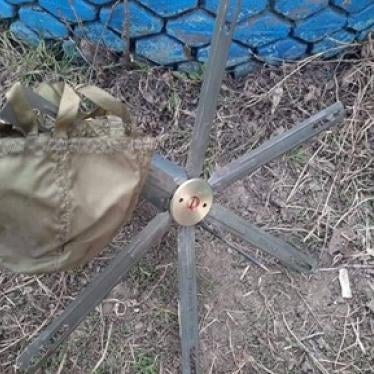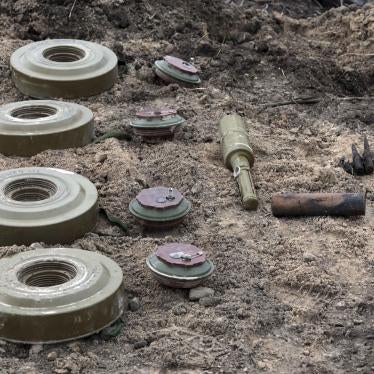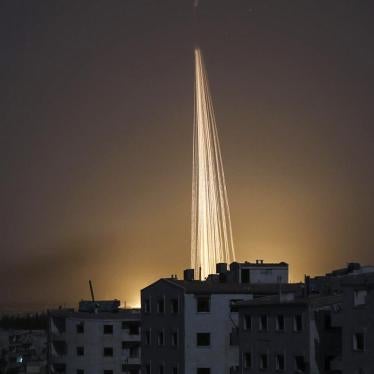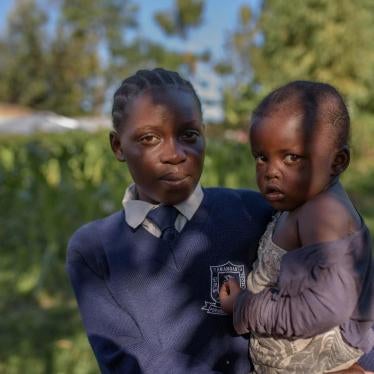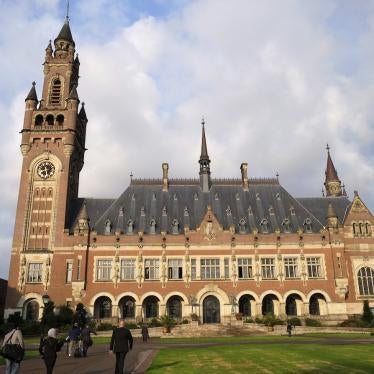Thank you, Mr. Chair.
Next month, for the first time in 37 years, a UN disarmament body will have a dedicated window to address the humanitarian problems caused by incendiary weapons, one of modern warfare’s cruelest class of arms.
At their 2016 Review Conference, states parties to the Convention on Conventional Weapons (CCW) agreed to add the topic to the agenda of their annual meeting. These states should come prepared in November to use this time for substantive discussions about the harm incendiary weapons inflict on civilians and the adequacy of CCW Protocol III, which was adopted in 1980.
Countries need not wait until then to advance the conversation, though. In their statements at First Committee, they should condemn the use of incendiary weapons and express their support for reviewing and strengthening the restrictions in Protocol III.
Incendiary weapons cause death and excruciatingly painful injuries through a combination of heat and flame. Victims suffer from severe burns, sometimes to the bone, as well as damage to the respiratory system. People who survive their initial injuries often suffer from lifelong disfigurement, psychological trauma, and social exclusion. The fires sparked by these weapons often destroy civilian objects and infrastructure.
Protocol III was in large part a response to the widespread use of napalm in the Vietnam War, but incendiary weapons remain a problem today. According to Human Rights Watch research, this year Syrian armed forces have used incendiary weapons in at least 22 attacks in five Syrian governorates. Many of the attacks involved ZAB submunitions containing thermite.
Also in 2017, members of the US-led coalition used ground-launched white phosphorus munitions during their operations against the Islamic State in Mosul, Iraq, and Raqqa, Syria. While Iraqi Security Forces stated that they used the white phosphorus to create smokescreens, the substance is known to cause burn injuries comparable to those of other incendiary weapons.
Protocol III has failed to prevent the irresponsible use of incendiary weapons. Two major loopholes have undermined its effectiveness.
First, although Protocol III prohibits the use of air-dropped incendiary weapons in concentrations of civilians, it has weaker restrictions on the use of ground-launched types.
Second, Protocol III’s definition of incendiary weapons covers only weapons that are “primarily designed” to set fires and cause burn injuries. As a result, many argue it does not cover multipurpose munitions with incendiary effects, notably white phosphorus.
These loopholes would be legally straightforward to close. The protocol could be amended to prohibit all incendiary weapons, regardless of their delivery system, in concentrations of civilians. It could also adopt a definition based on the effects of a weapon, rather than the purpose for which it was designed. An absolute ban on the use of incendiary weapons would have the greatest humanitarian impact.
An amended protocol would of course bind states parties to stricter rules. In addition, it would increase the stigma against incendiary weapons and put more pressure on states not party and non-state armed groups to comply with the international standard.
Recognition of the problem of incendiary weapons and support for taking action against them continues to grow. At the CCW’s Fifth Review Conference last December, about 25 states, plus the European Union, expressed concern about or condemnation of the use of incendiary weapons in their statements. The final report, agreed to by consensus, goes beyond merely expressing concerns and “condemns any use of any incendiary weapons against civilians or civilian objects, and any other use incompatible with relevant rules of International Humanitarian Law.”
At the same conference, about 15 states parties called for reviewing and in some cases strengthening Protocol III. As mentioned earlier, the Review Conference as a whole agreed to add Protocol III to the 2017 agenda.
Given the ongoing use of incendiary weapons and the shortcomings of existing law, states should take advantage of the opportunity presented by these developments. We urge them to engage in meaningful dialogue in New York and Geneva and to work actively to better protect civilians from the horrific harm caused by incendiary weapons.
Thank you.
